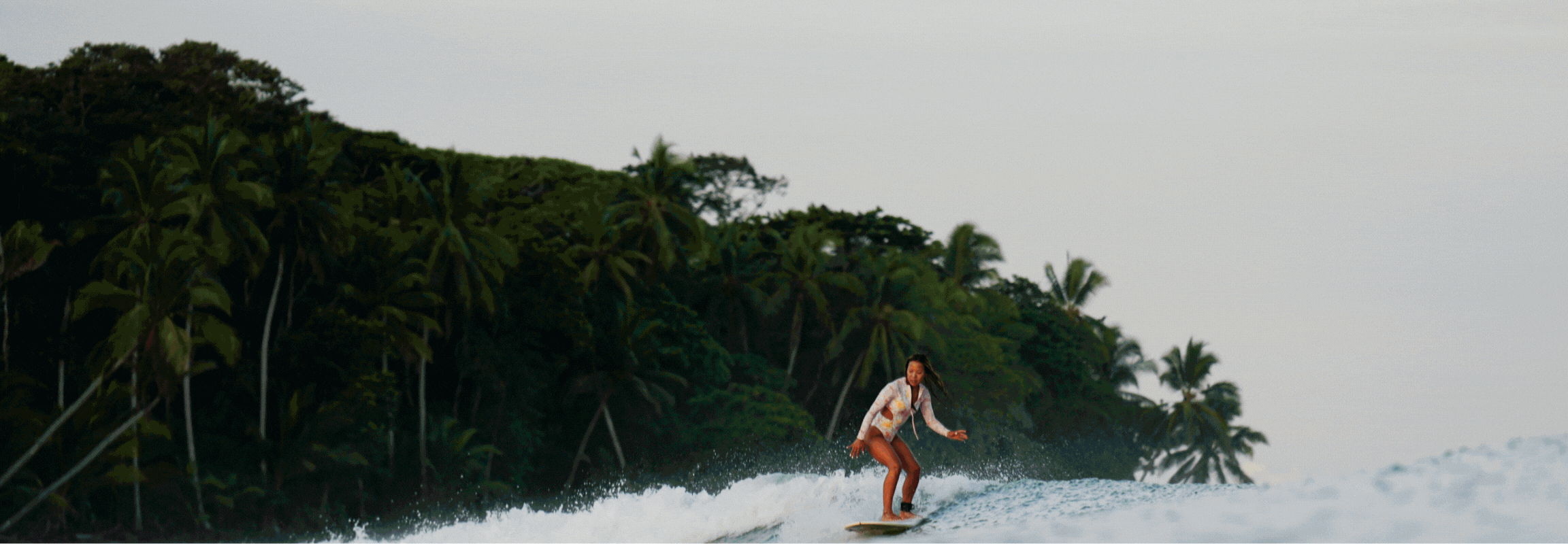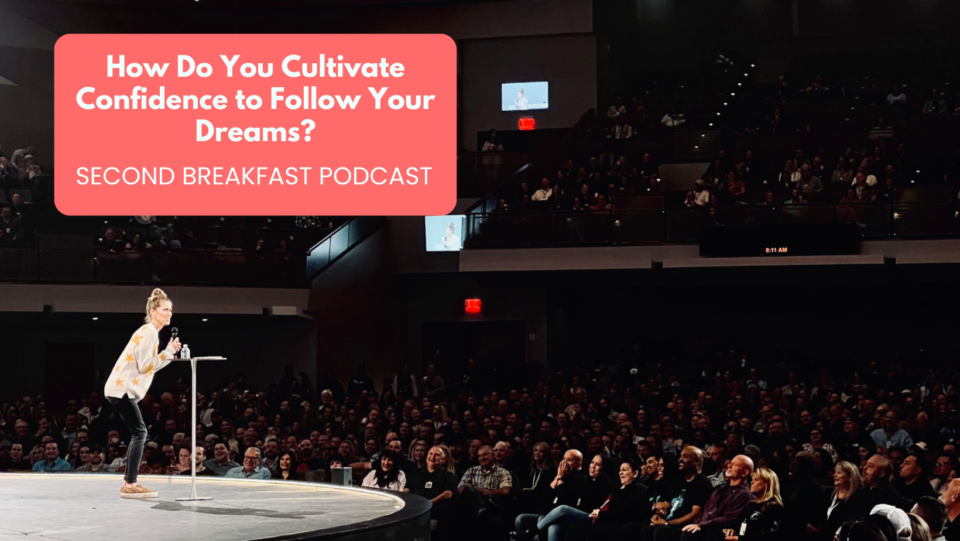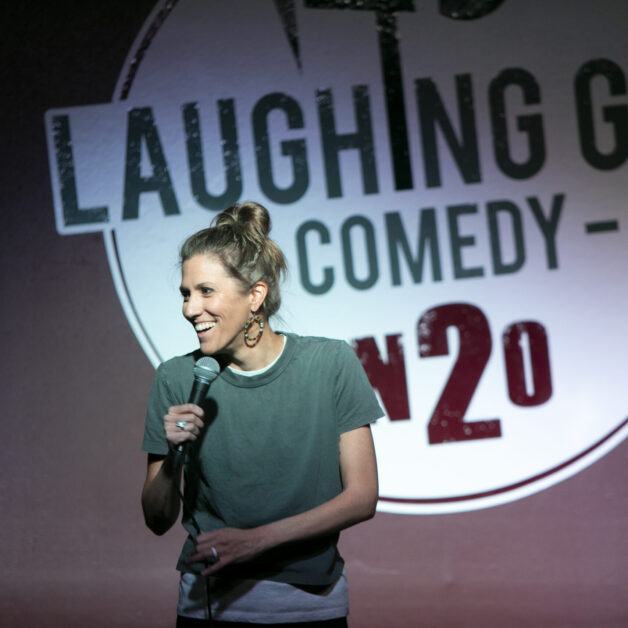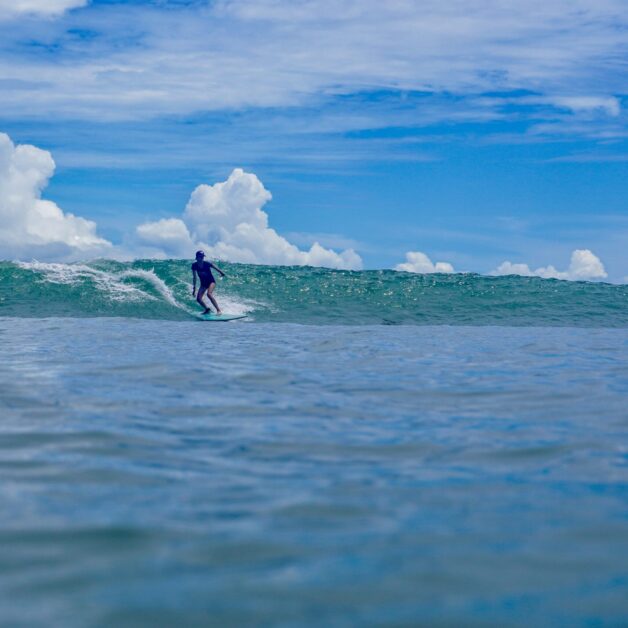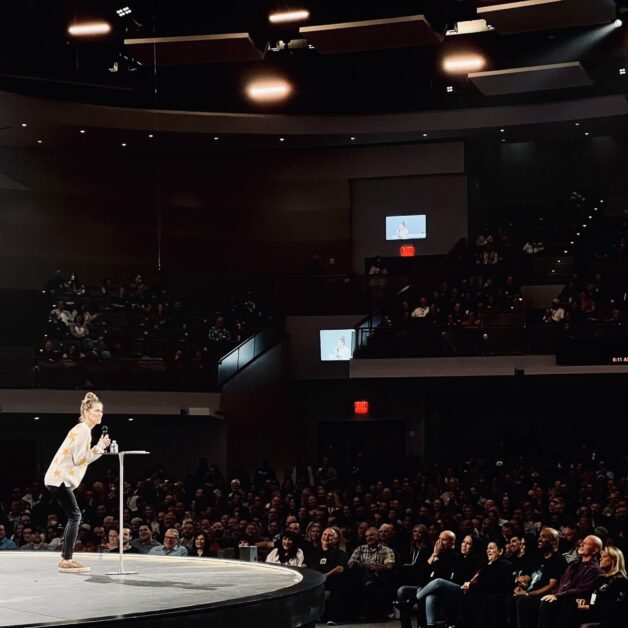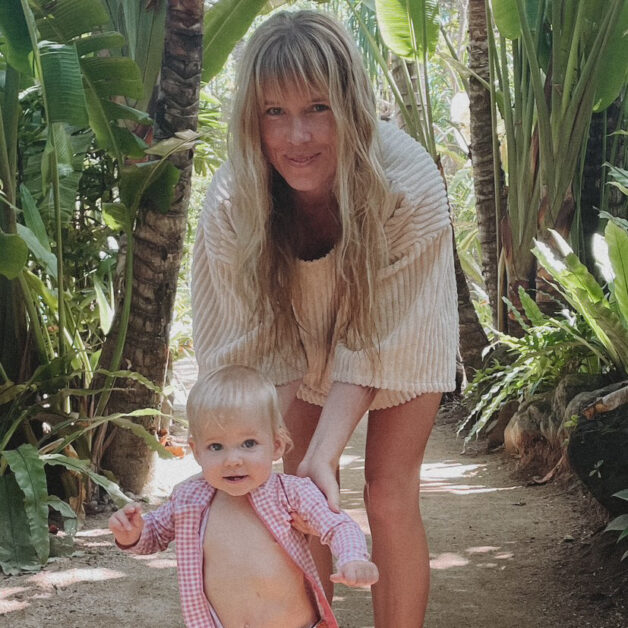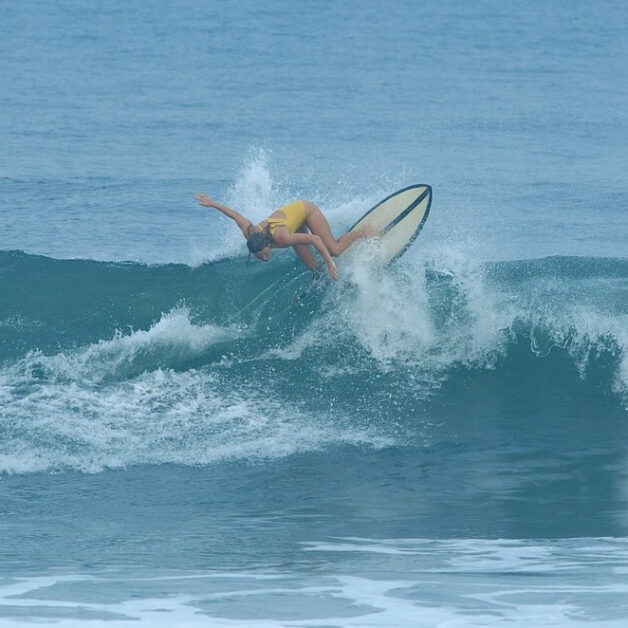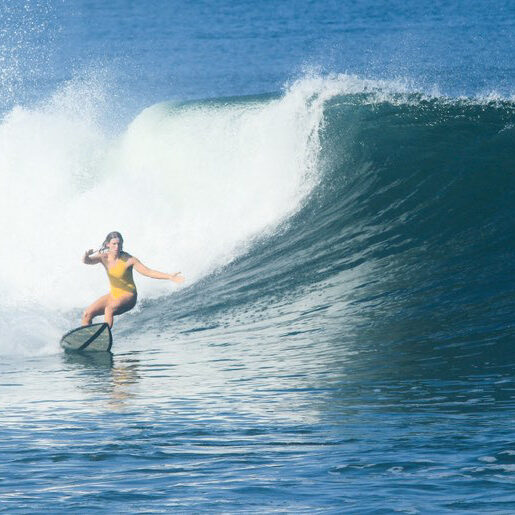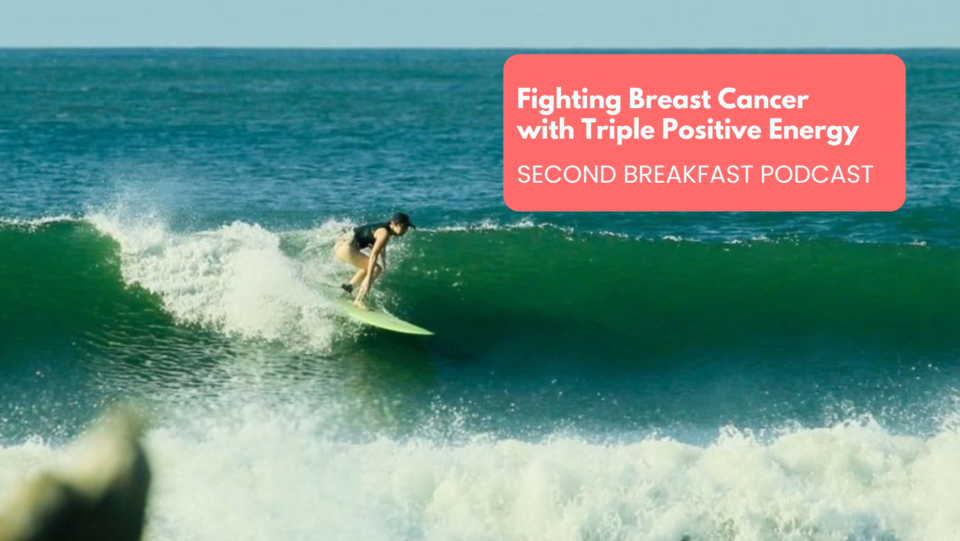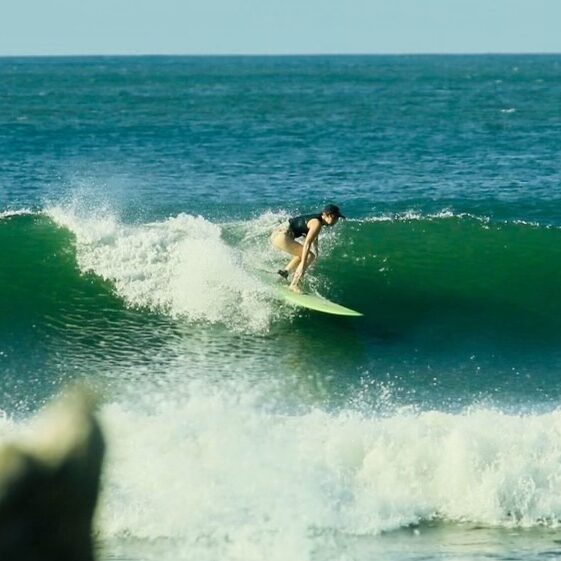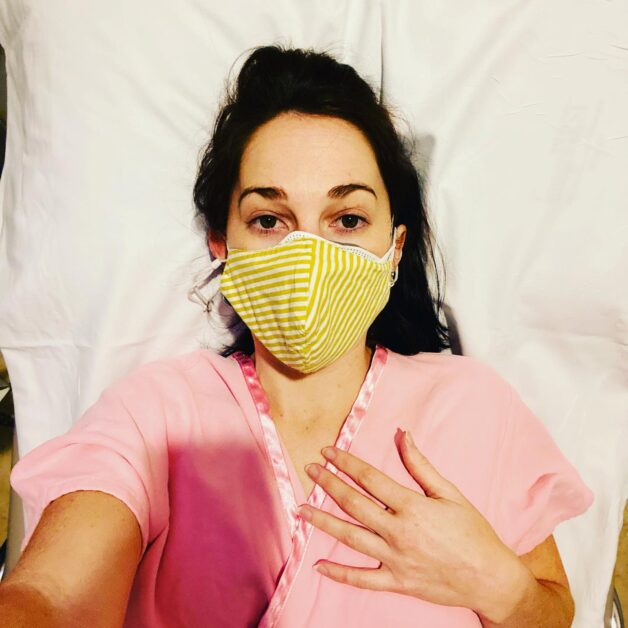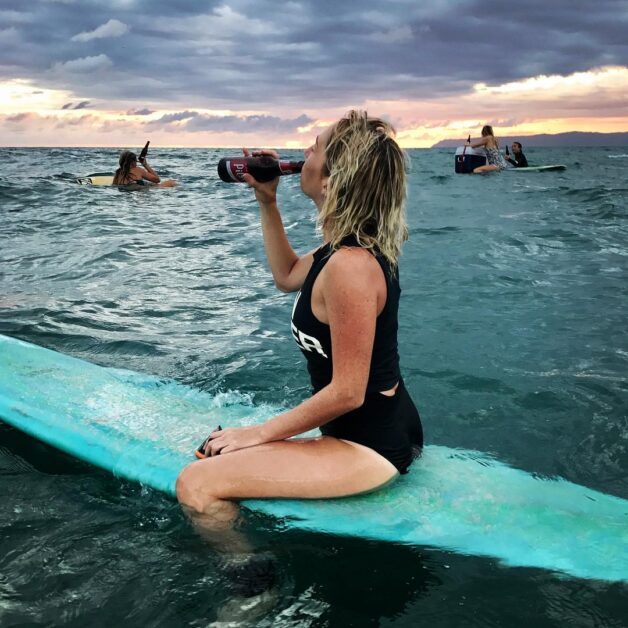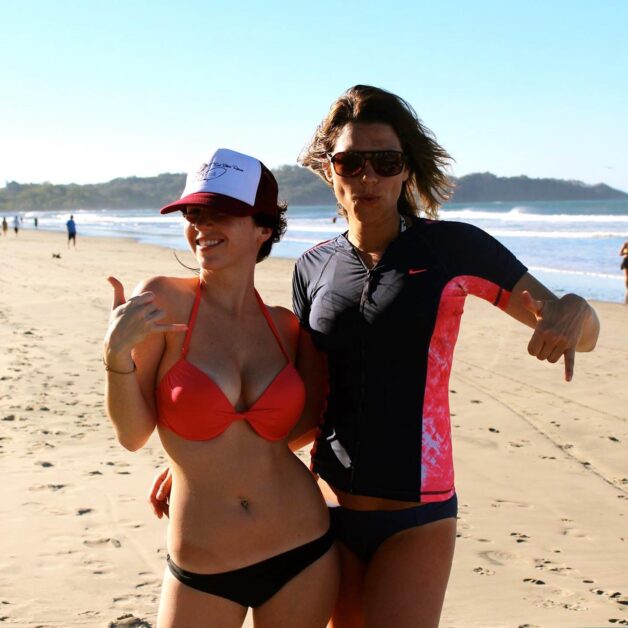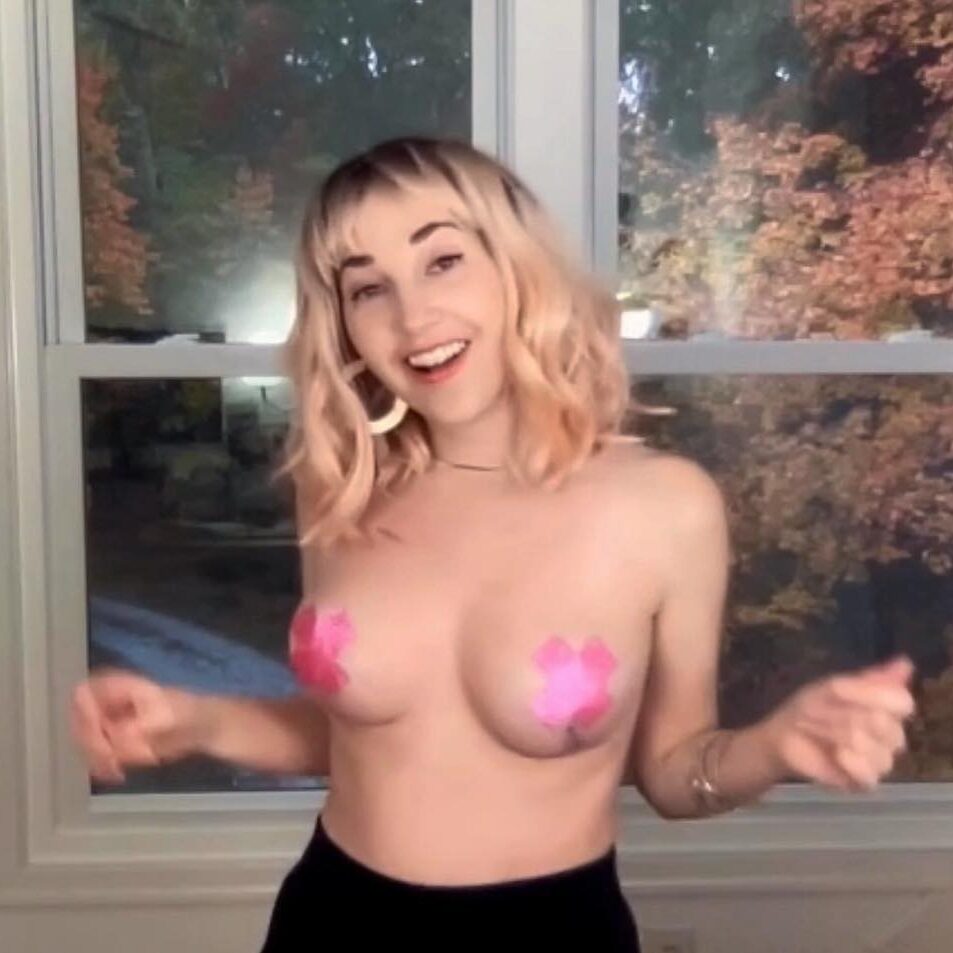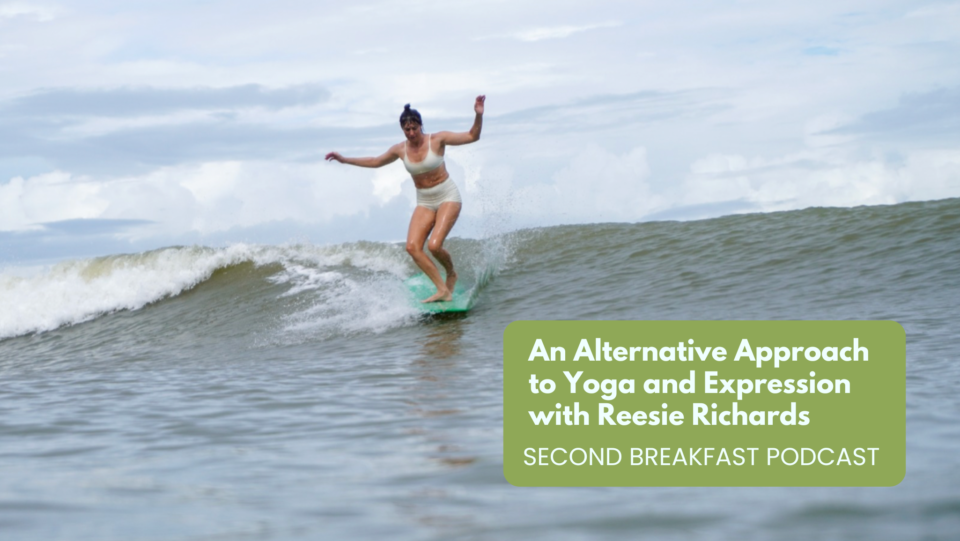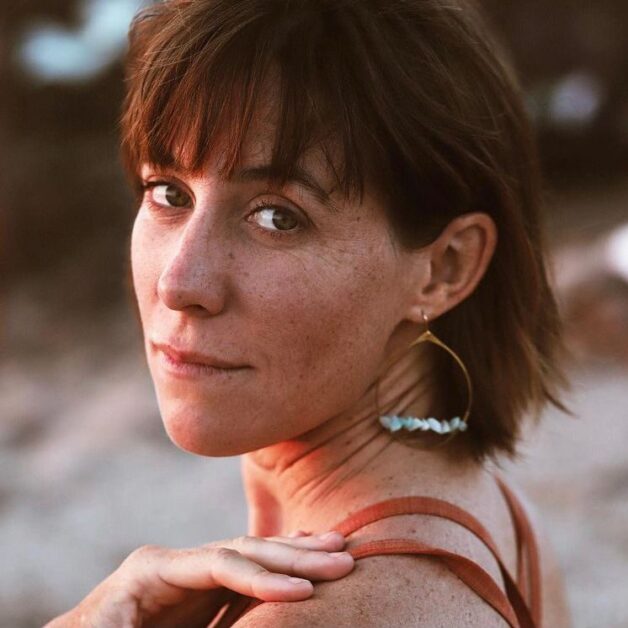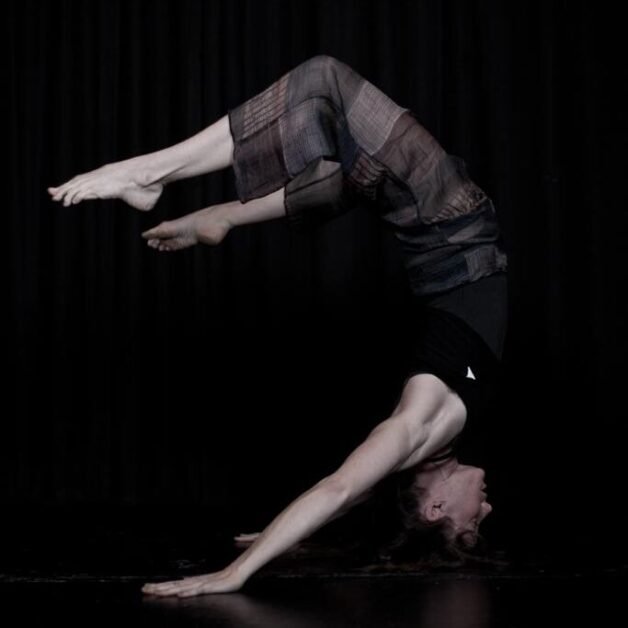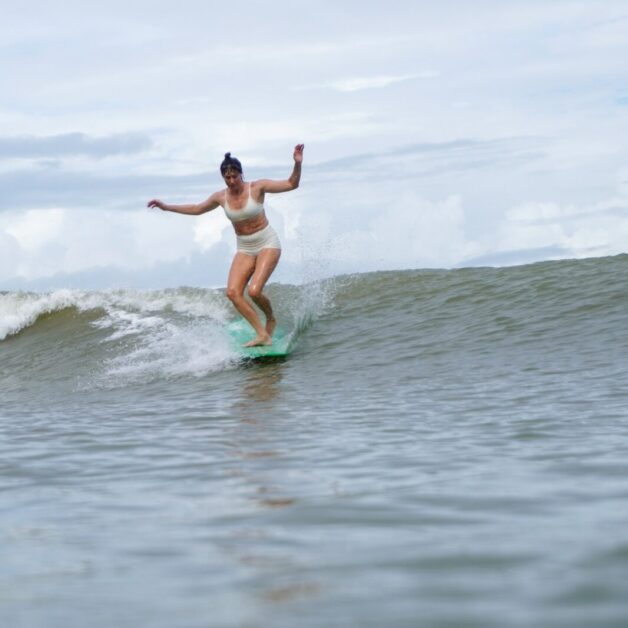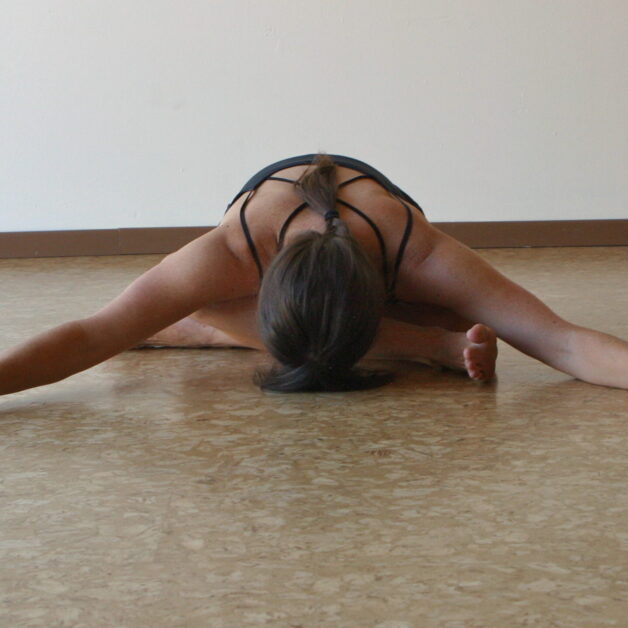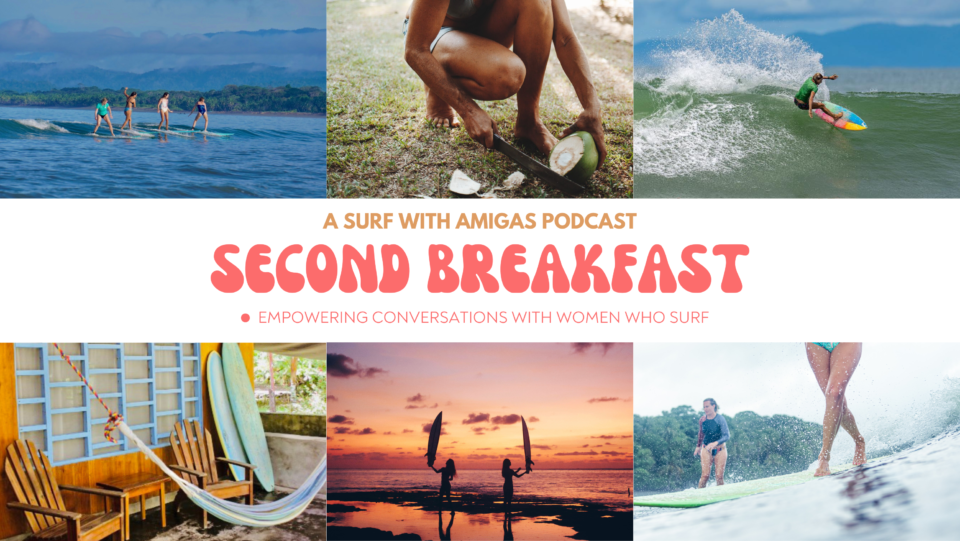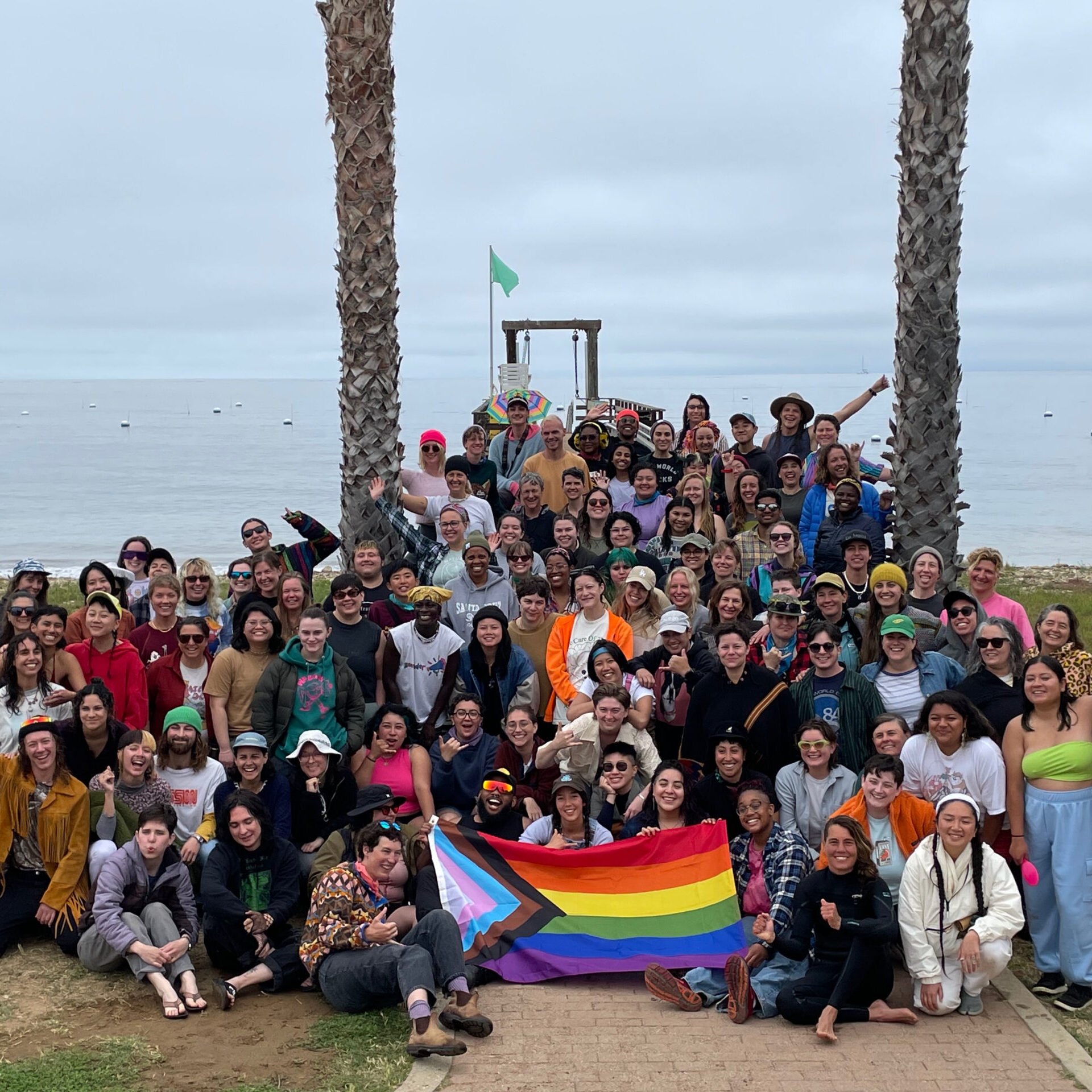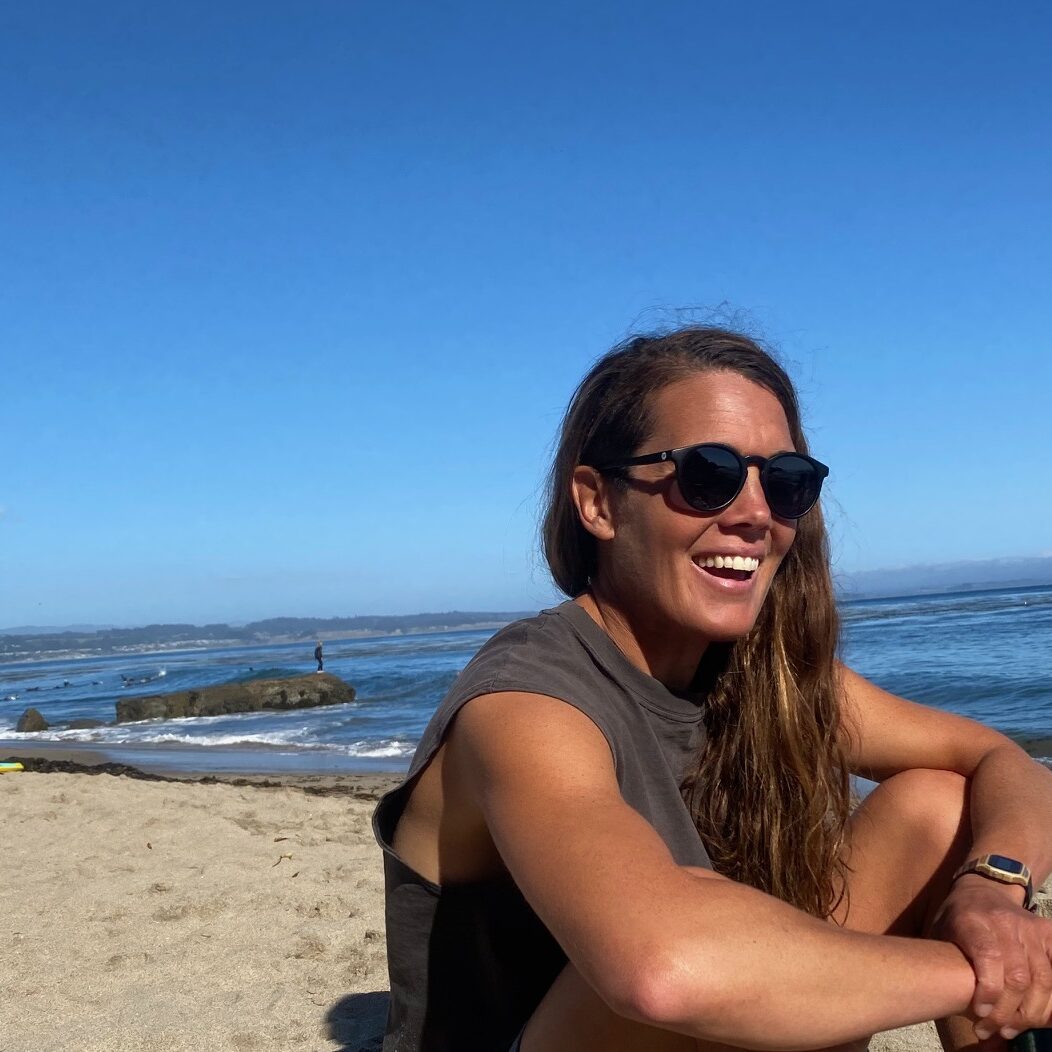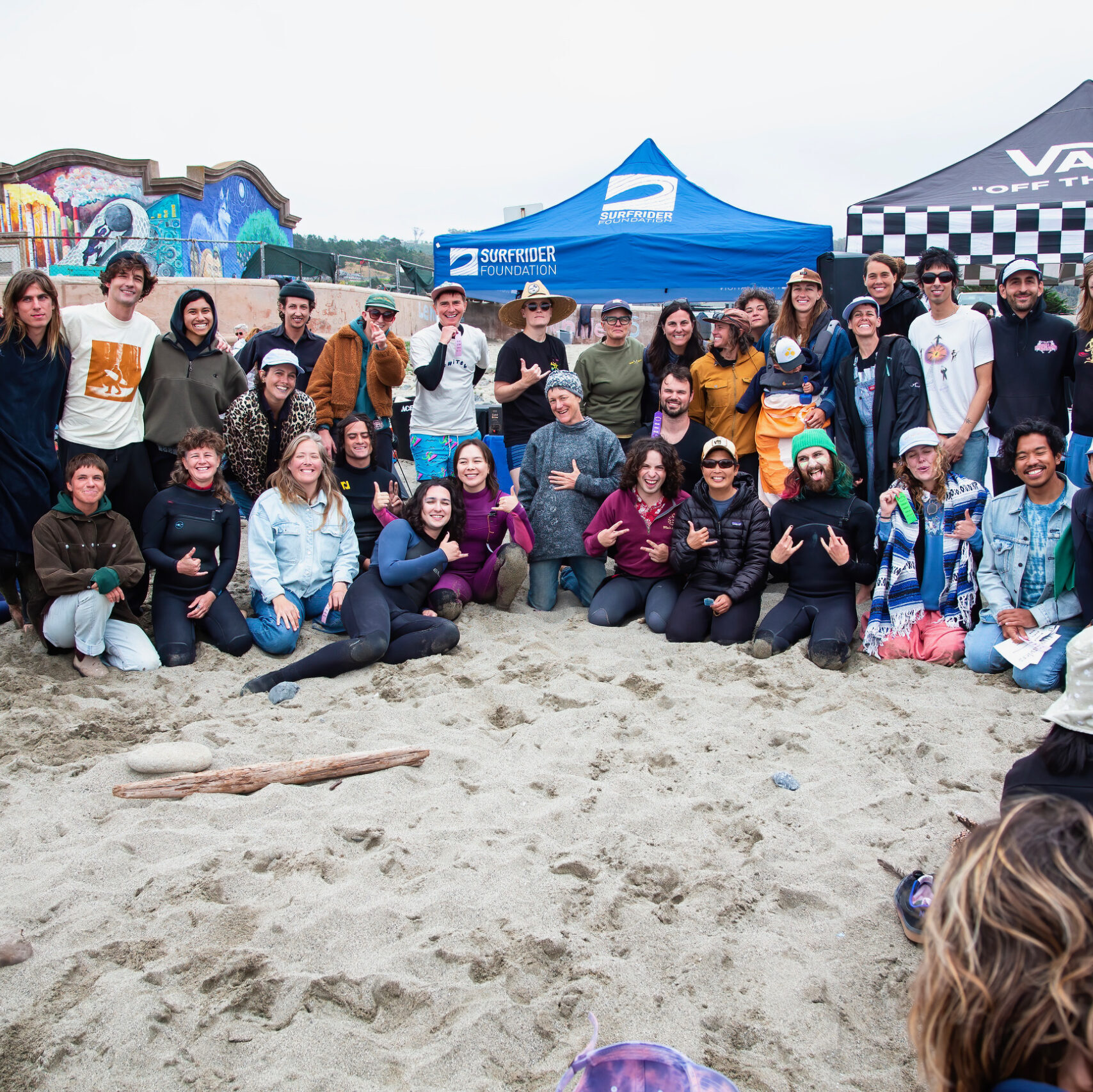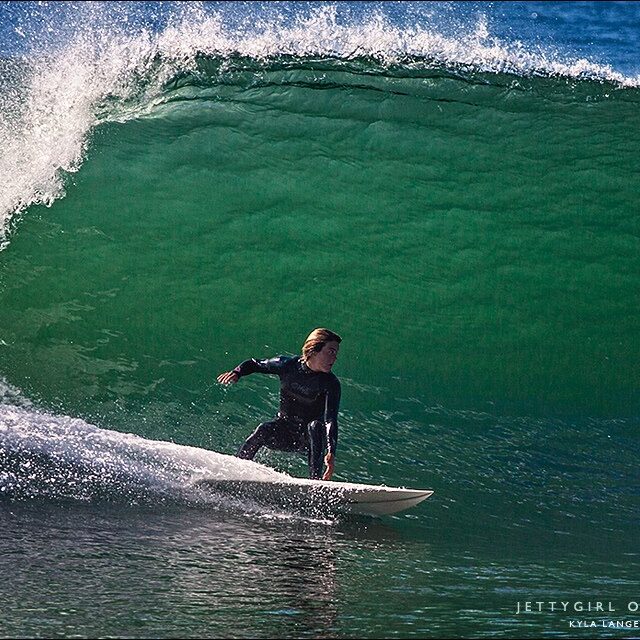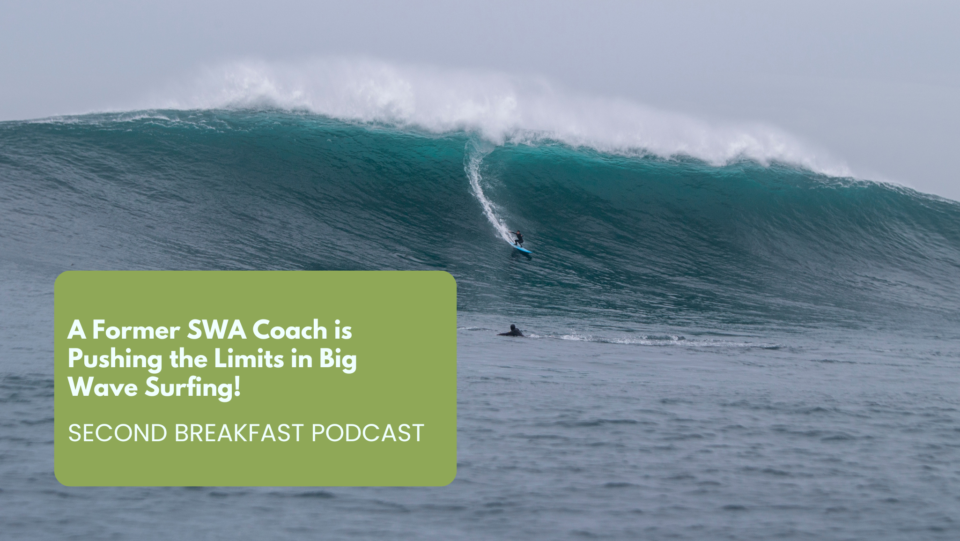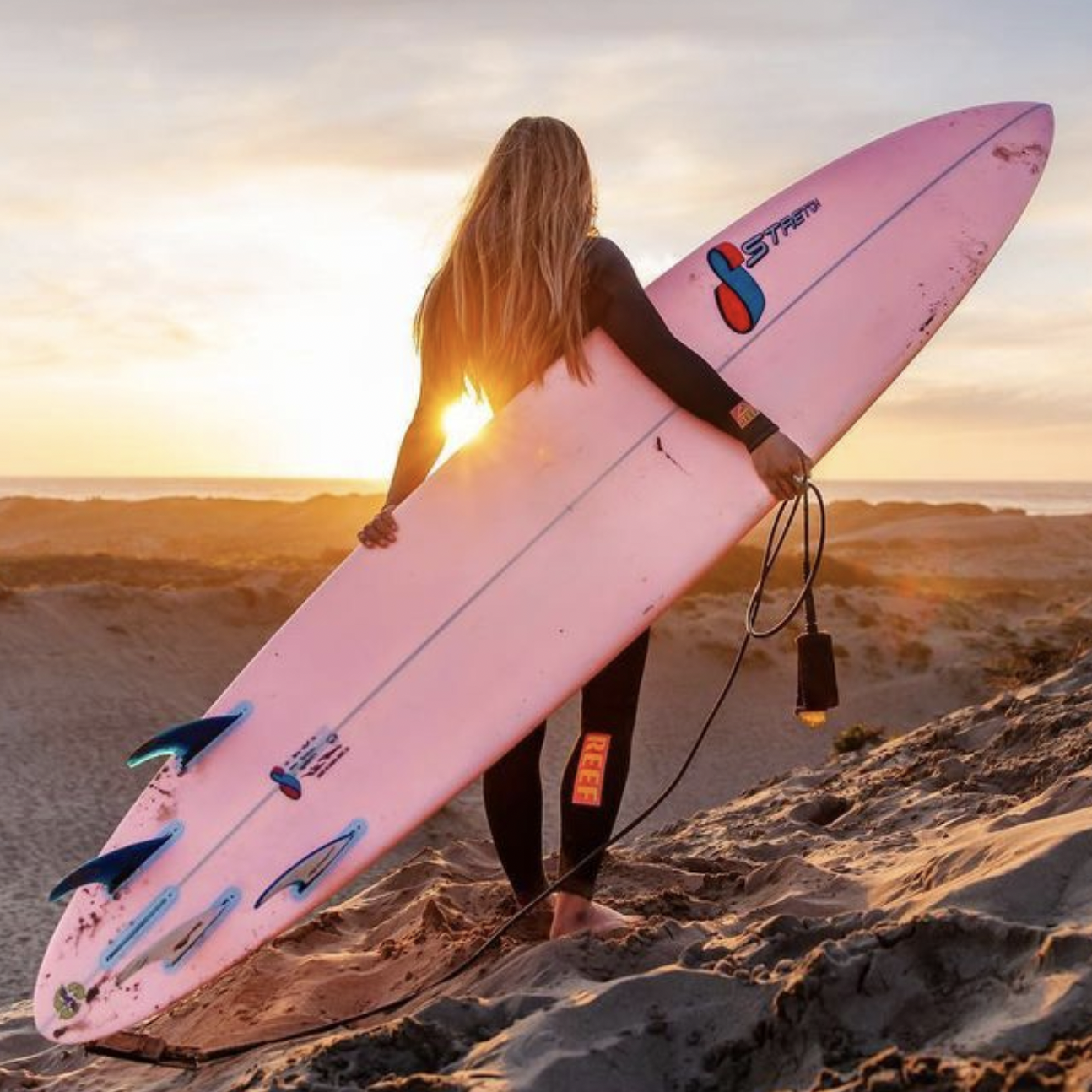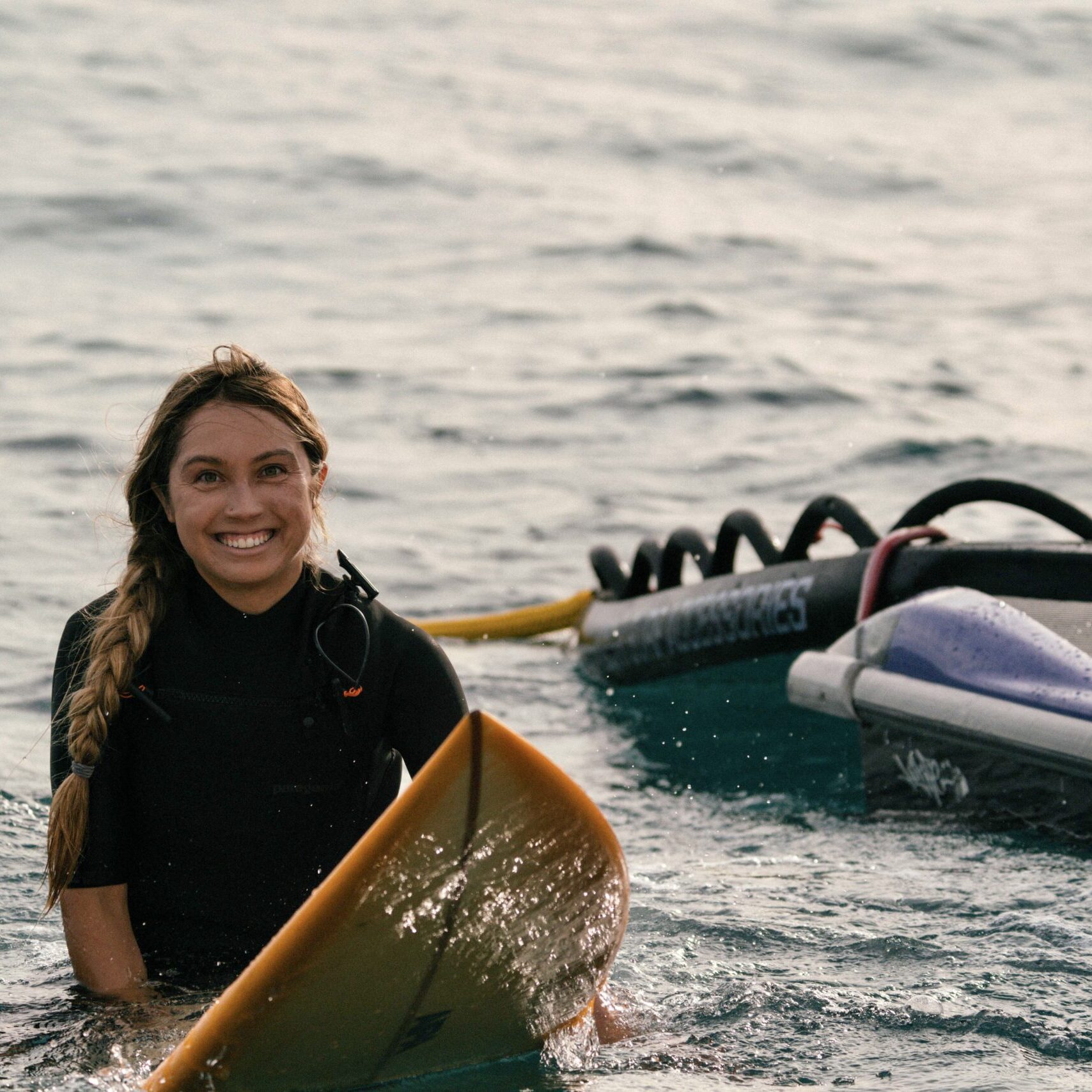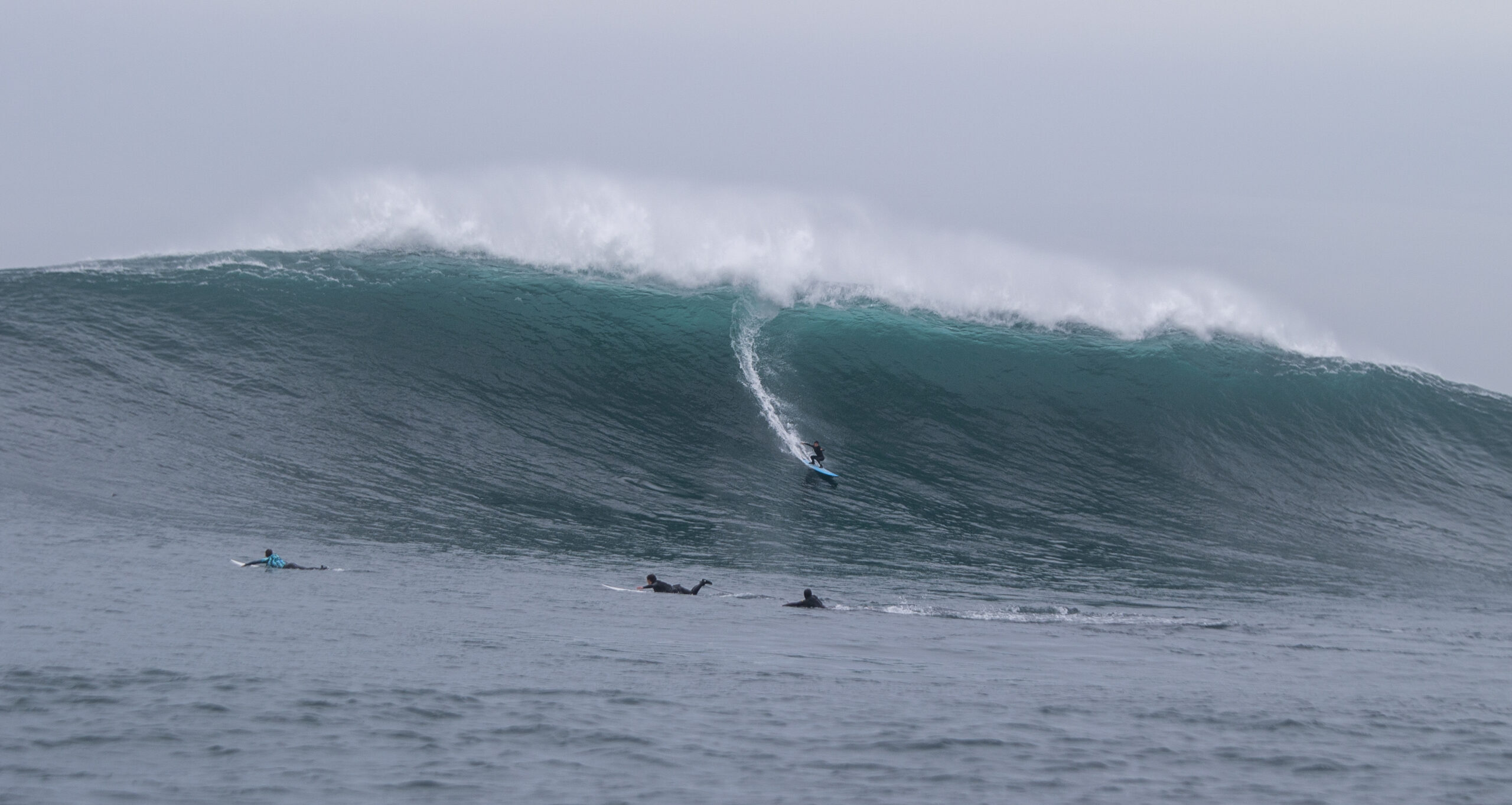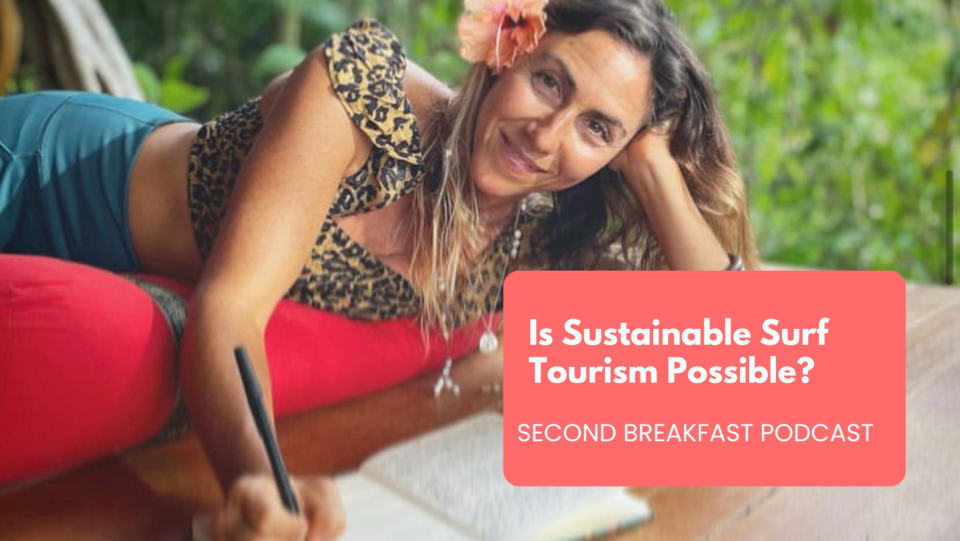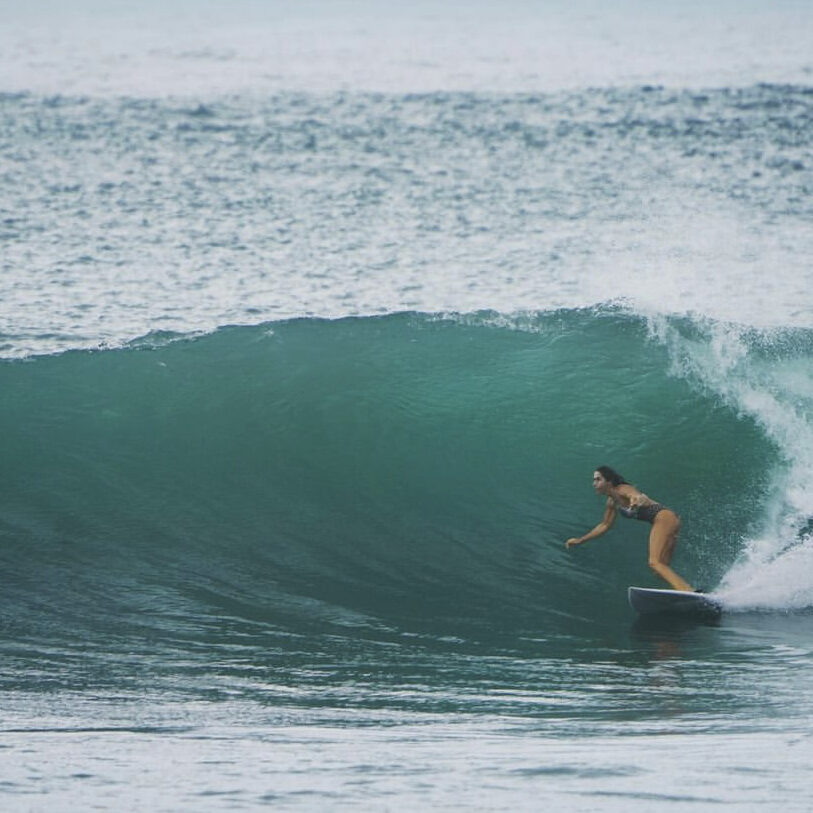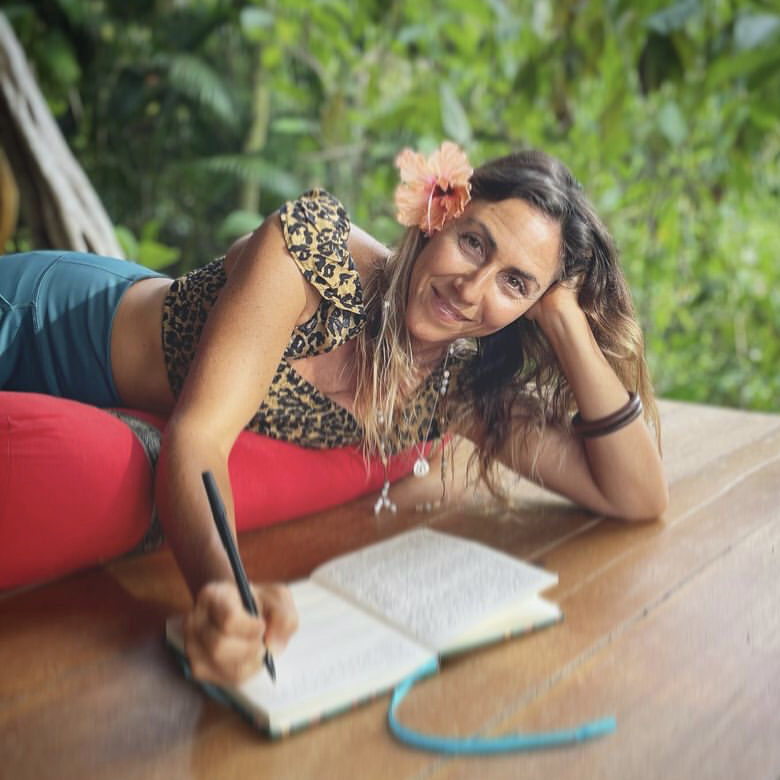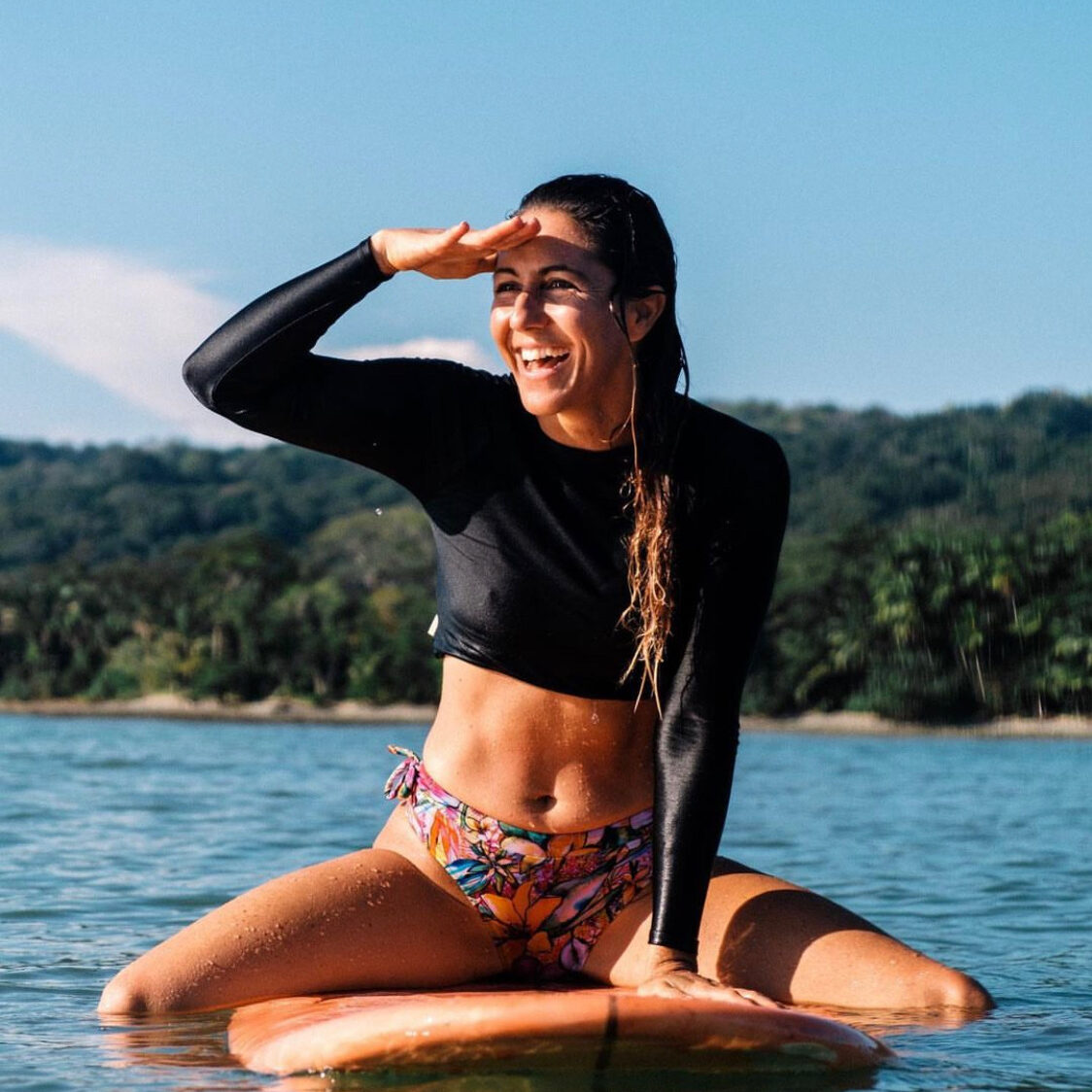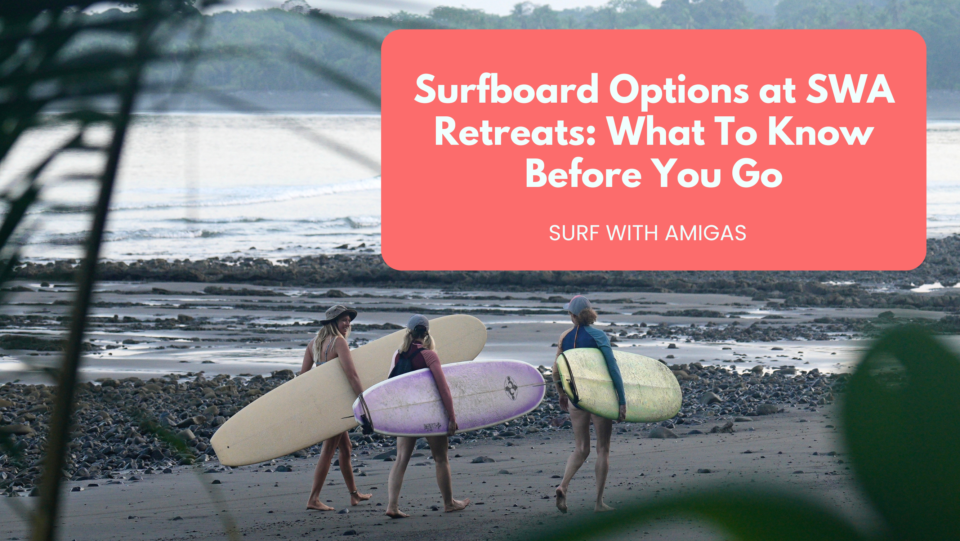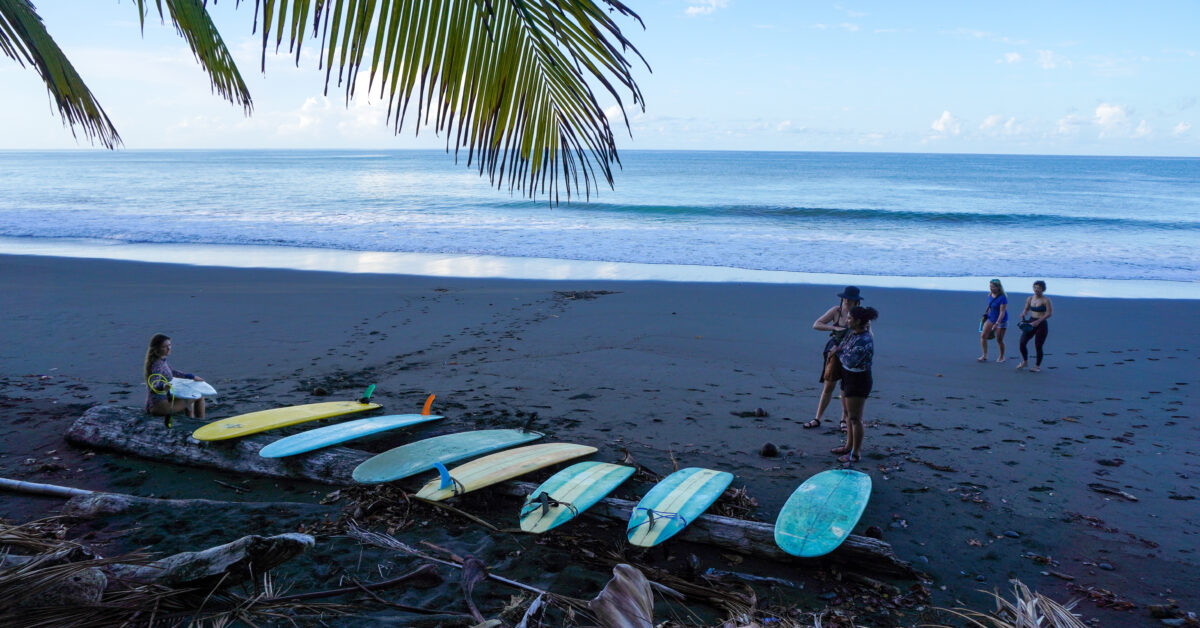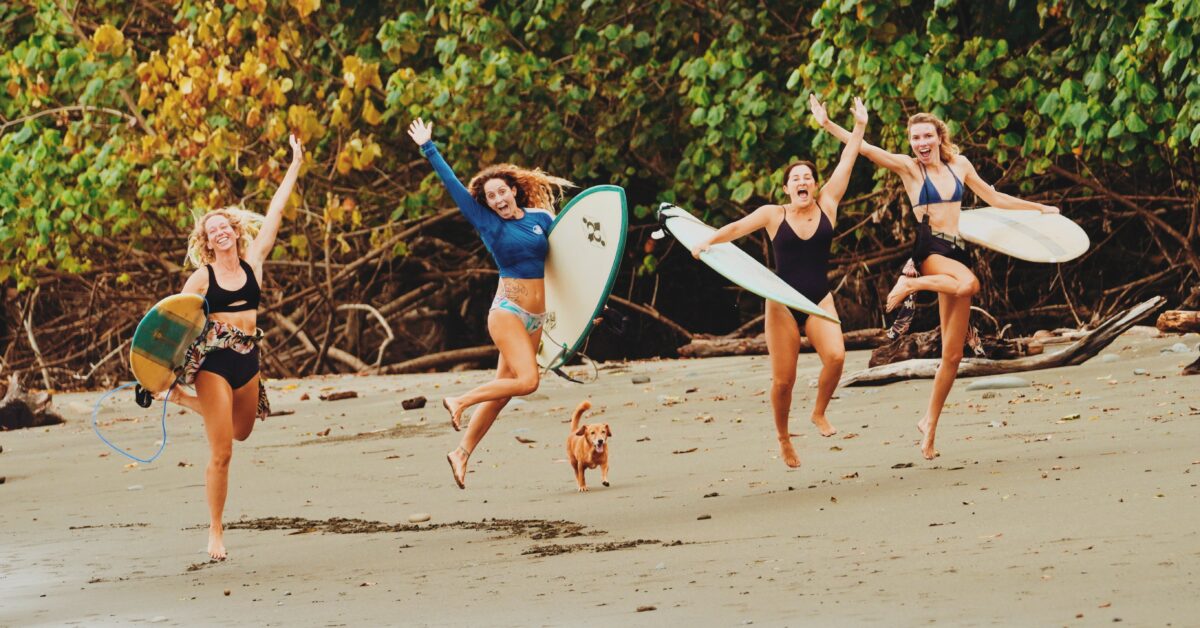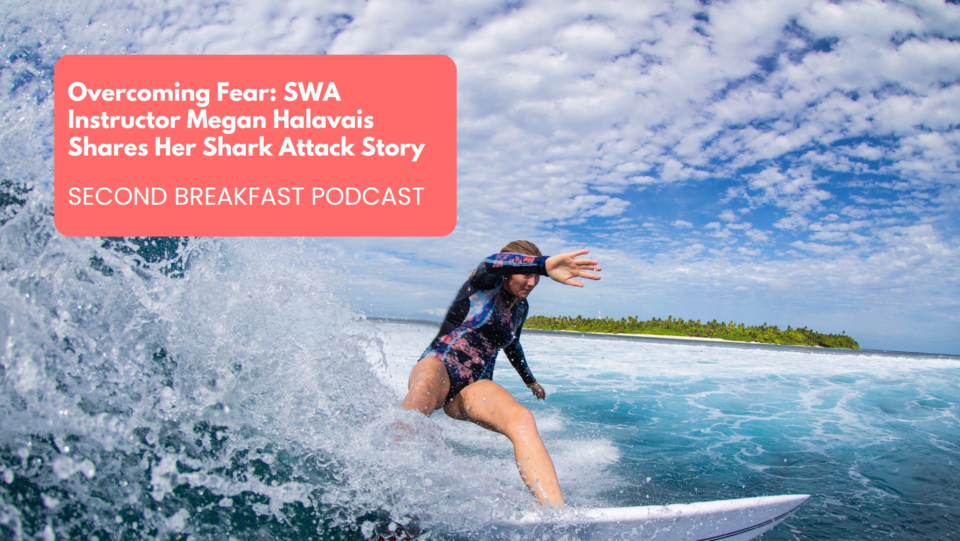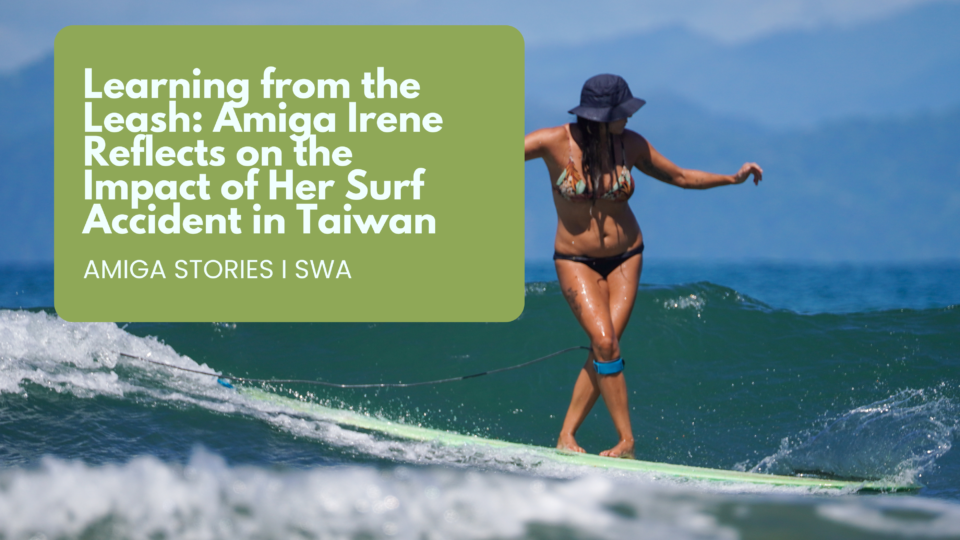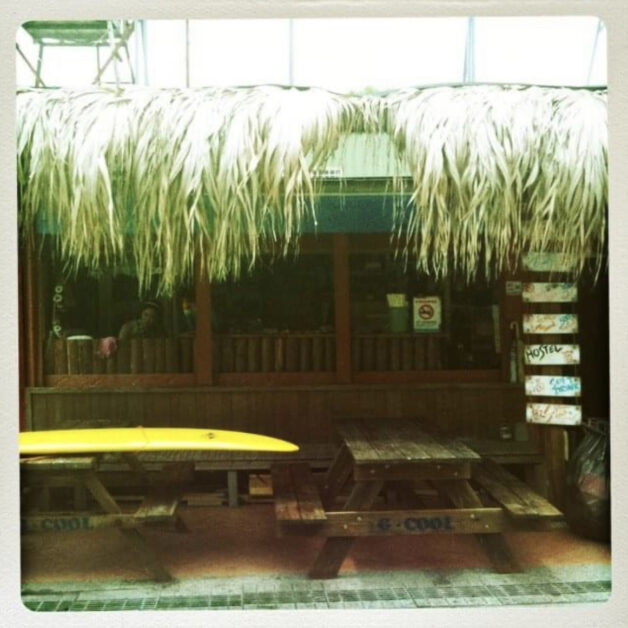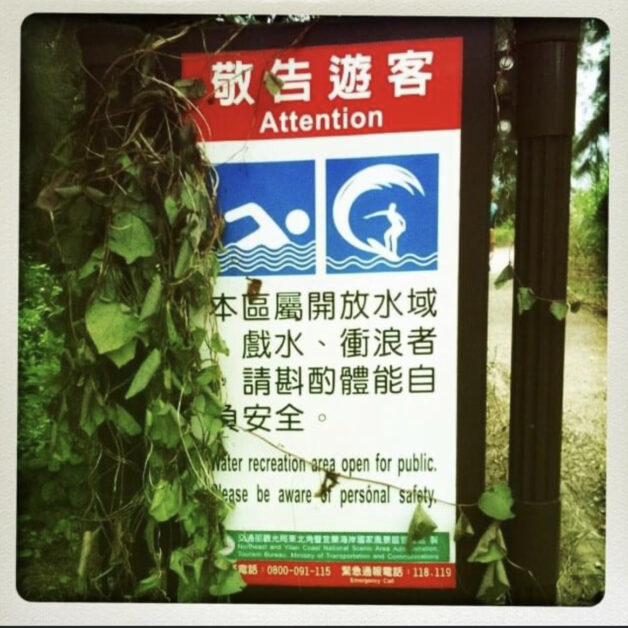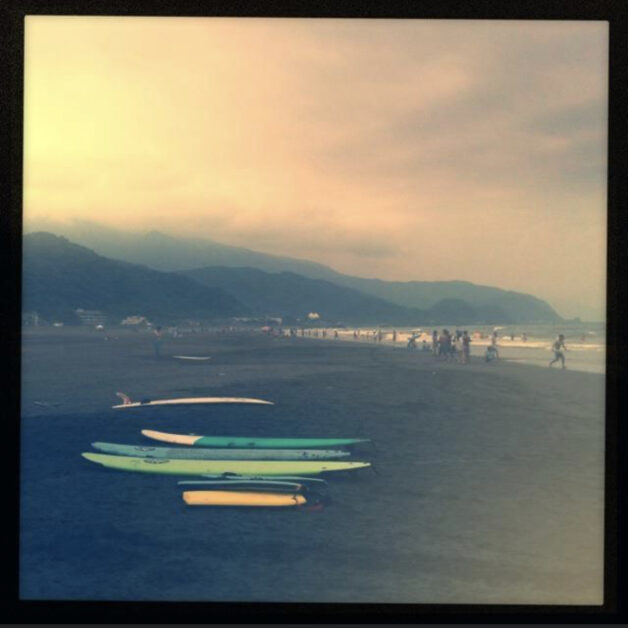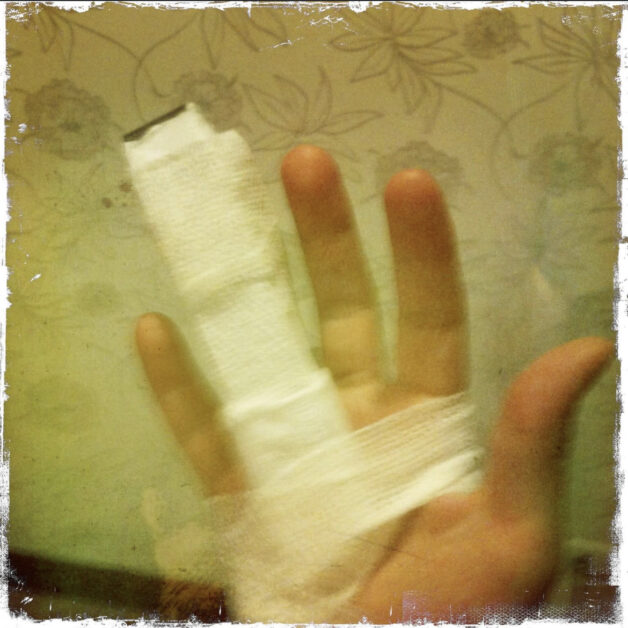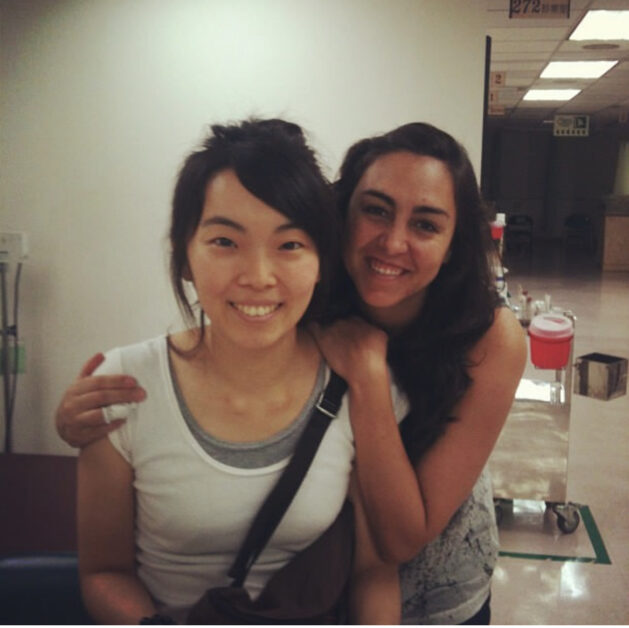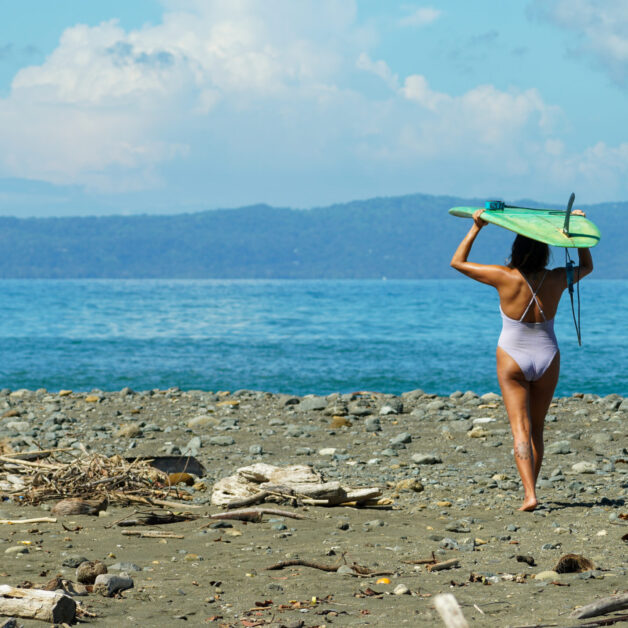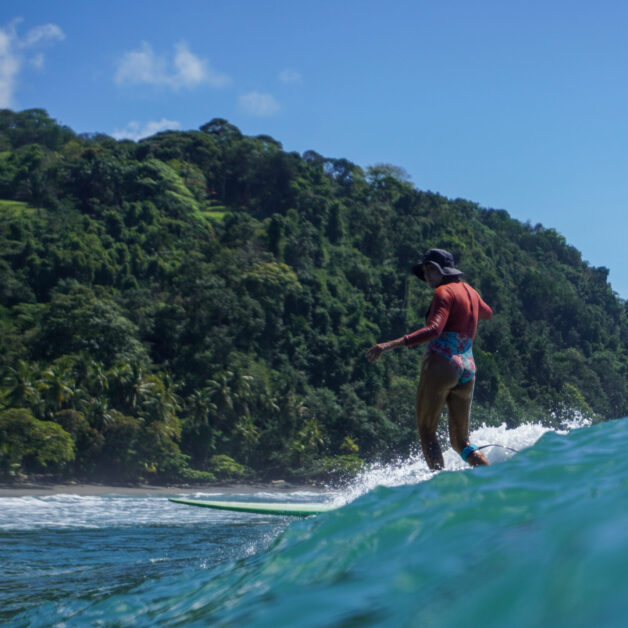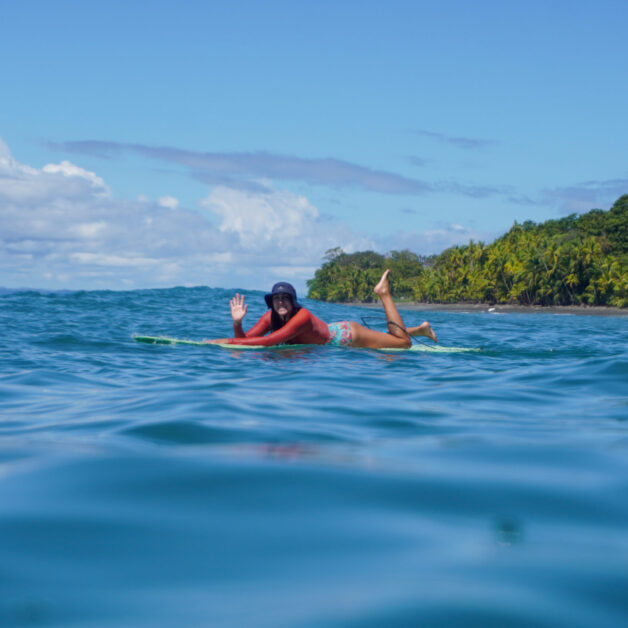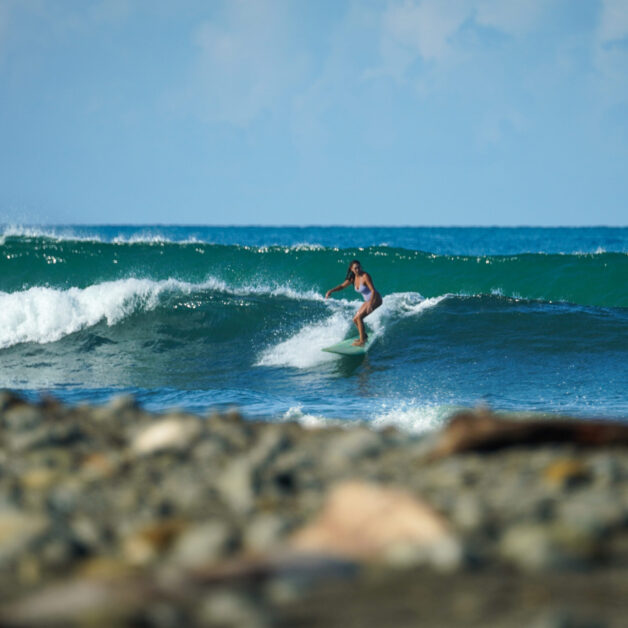Do you pursue what you love even if it scares you? amiga, author, stand-up comedian and artist JJ Barrows shares her inspiring story about how surfing gave her the confidence to follow her passions.
The ocean has served as JJ’s medicine throughout life; helping manage fear and anxiety while also illuminating her talents and encouraging change. In her early days of surfing, JJ struggled to belong and find community. Throughout her surf journey, the ocean helped cultivate her inner voice, gain confidence and create a life of intention in ways she never could have imagined.
At some point in each of our individual surf journeys, we experience feelings of exclusion, an inability to “fit in,” or being outed as a “kook” in the water. JJ’s story is no different. She’d pull up to the parking lot at the beach and see serious-looking “surfer bros” ready to paddle out, zinc-ing up their faces without a smile in sight. JJ dabbled in surfing as a young girl, but the strong intimidation factor and xenophobic natures of the lineups she entered caused her to put a long-term hold on her surfing career.
While living in San Diego in her late 20s, JJ suffered from crippling anxiety, at times making it difficult to even leave the house. “It was the ocean that slowly pulled [her] out of being overwhelmed by her existence in the world. [She] felt like the ocean was this safe place to go and just be.” When she finally entered the water again, she swore she’d “just let herself feel how scary it is and do it anyways.” In addition to meeting many amigas after attending SWA retreats, JJ was also eventually was able to create her own community in San Diego through surfing. JJ knew any changes to her feelings of belonging weren’t going to happen overnight, but still her mentality remained, “I might not be so and so’s level, but it doesn’t mean I’m not allowed in the ocean. It doesn’t mean I don’t belong.”
While battling mental health issues, JJ stumbled upon comedy. She was looking for a therapist but instead accidentally found herself in a standup comedy class. Fast forward a decade or so and she has now performed in comedy clubs, churches and awkward dinner parties all over America. She was able to find success and confidence in comedy but is still always striving for the ultimate balanced lifestyle, both in and out of the water.
She explains, “having work as a purpose for me was a huge thing. It’s like with anything, you can have something that you love or a hobby or a group of friends or a sport or whatever and maybe that thing is purposeful enough, but for me I lacked a lot of purpose and the ocean was great medication for that.”
When JJ first started getting commissions or shows for her art, she’d hang the paintings and then walk away. She remembers thinking at her first art show experience, “this is exactly what I’m afraid of. People saying I suck. I couldn’t, I didn’t want to hear it. It just felt very vulnerable. But then after, I realized I was missing out on people saying, I love this piece and this is what it spoke to me.
“And so again, you learn how to glean and absorb and yeah, you’re not going to be everybody’s cup of tea, but that’s okay. You don’t need to be.”
To anyone looking to redirect or refocus their life path, JJ advises, “be a pursuer of that which you love. Don’t ignore whatever it is. I do think we’re all wired a certain way and I don’t think it’s a mistake or a random coincidence that we have the desires that we have. So I would say first thing is, start listening to what’s in there and pursue that. What I mean by that is not necessarily to go out and take a class tomorrow, but just to start pursuing can also be the act of listening, right? Pay attention. In the world that we live in, we’re just so distracted all the time.”
With a refreshing storyteller style, JJ displays the freedom a quippy sense of humor can reveal in all of us by giving breath to those gritty moments. If you’re interested in hearing more of her story, give her podcast episode a listen:
Listen now on Apple Podcasts or Spotify
You can also find JJ on Instagram @jjbarrows and watch her videos, shop her books and art (@jjbarrowsart) and sign up for her email list at jjbarrows.com.
